 This is the first full-length collaboration between Sabra and Tabbal, but it is apparently also the sixth collaborative release between Portland's Beacon Sound and Lebanon's Ruptured Records (which was co-founded by Tabbal). While Tabbal's solo work has been a very enjoyable recent discovery for me, this is my first encounter with Julia Sabra, who is normally one-third of the excellent Beirut-based dreampop trio Postcards. The pair do have a history of working together, as Tabbal has co-produced several Postcards releases, but their creative union only began to take shape in the aftermath of Beirut's massive 2020 port explosion (which destroyed Sabra's home, badly injured her partner/bandmate Pascal Semerdjian, and displaced a whopping 300,000 people). Unsurprisingly, one of the primary themes of Snakeskin is the precarious concept of "home" and the "the disappearance of life as we know it" in a volatile and oft-violent world. Those are admittedly more urgent themes in Tabbal and Sabra's neck of the woods than some others (the album was also inspired by the 2021 Palestinian and the invasion of Armenia), but loss and uncertainty eventually come for us all and they make a universally poignant emotional core for an album. And, of course, great art can sometimes emerge from deeply felt tragedies and Tabbal and Sabra are a match made in heaven for that challenge, as Julia's sensuous, floating vocals are the perfect complement to Tabbal's gnarled and heaving soundscapes.
This is the first full-length collaboration between Sabra and Tabbal, but it is apparently also the sixth collaborative release between Portland's Beacon Sound and Lebanon's Ruptured Records (which was co-founded by Tabbal). While Tabbal's solo work has been a very enjoyable recent discovery for me, this is my first encounter with Julia Sabra, who is normally one-third of the excellent Beirut-based dreampop trio Postcards. The pair do have a history of working together, as Tabbal has co-produced several Postcards releases, but their creative union only began to take shape in the aftermath of Beirut's massive 2020 port explosion (which destroyed Sabra's home, badly injured her partner/bandmate Pascal Semerdjian, and displaced a whopping 300,000 people). Unsurprisingly, one of the primary themes of Snakeskin is the precarious concept of "home" and the "the disappearance of life as we know it" in a volatile and oft-violent world. Those are admittedly more urgent themes in Tabbal and Sabra's neck of the woods than some others (the album was also inspired by the 2021 Palestinian and the invasion of Armenia), but loss and uncertainty eventually come for us all and they make a universally poignant emotional core for an album. And, of course, great art can sometimes emerge from deeply felt tragedies and Tabbal and Sabra are a match made in heaven for that challenge, as Julia's sensuous, floating vocals are the perfect complement to Tabbal's gnarled and heaving soundscapes.
The first piece that Sabra and Tabbal wrote together was "Roots," which surfaced last year on Ruptured's The Drone Sessions Vol. 1 compilation. That piece is reprised here as the sublimely beautiful closer, which was a great idea as it is one of the strongest songs on the album. However, it also illustrates how this collaboration has evolved and transformed, as "Roots" has the feel of a dreamy, bittersweet synth masterpiece nicely enhanced with hazy, sensuous vocals. Execution-wise, it is damn hard to top, but the duo's more recent work feels like a creative breakthrough that is greater than the sum of its parts. Put more simply, the pair previously merged their two styles in an expected way to great effect, but then they started organically blurring into a single shared style and the results turned into something more memorable and transcendent. The first major highlight is "All The Birds," which calls to mind a collision between the murky, submerged dub of loscil and what I imagine a bossa nova album by Julee Cruise might have sounded like. As cool as all that sounds, however, the reality is even better due to the muscular, snaking synth undercurrent and surprise snare-roll groove.


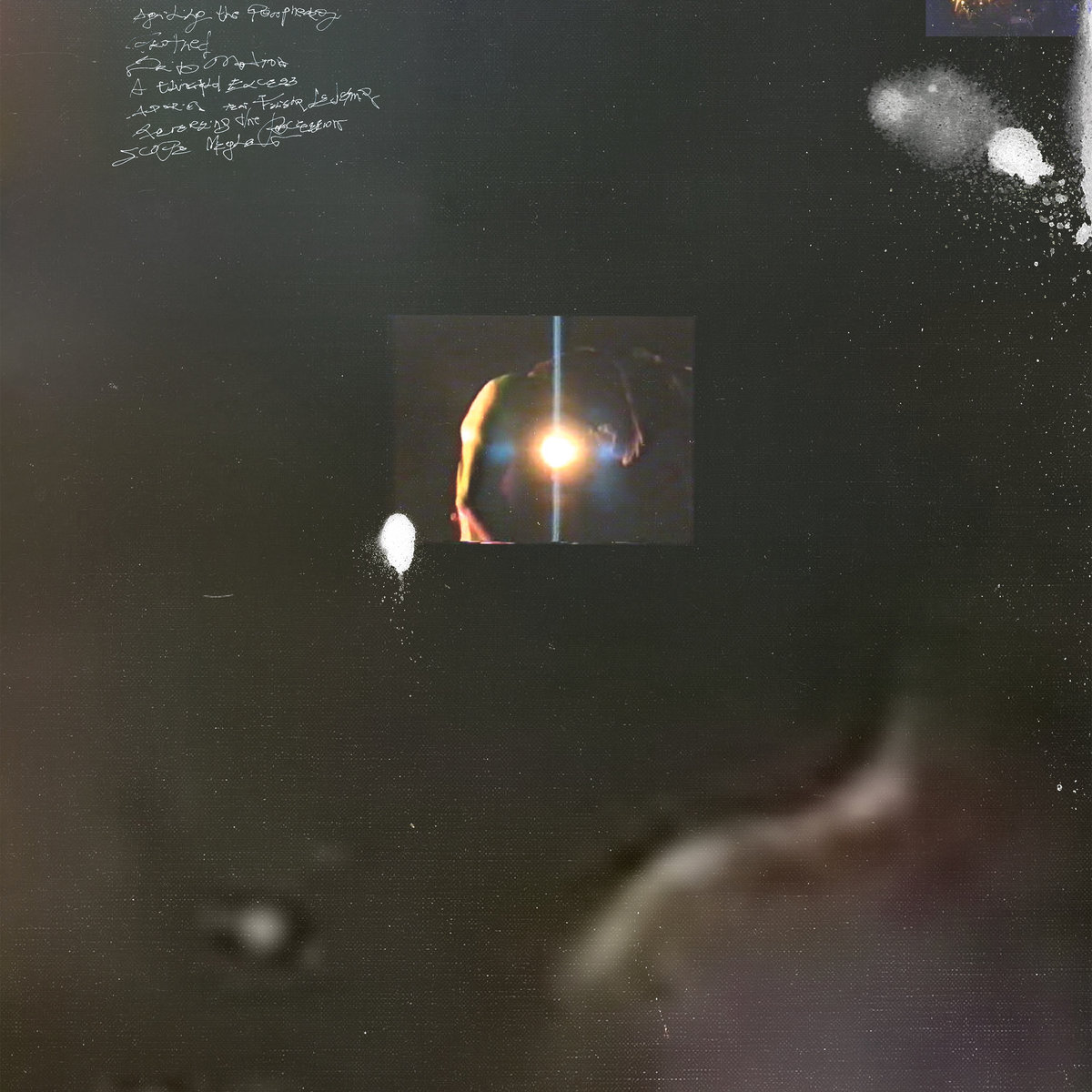 I was a bit later to the Angelo Harmsworth party than I would have liked, but the Berlin-based American composer has been fitfully releasing very distinctive blown-out "ambient" albums for about a decade now on an array of hip and discriminating small labels (Opal Tapes, Vaagner, enmossed, Psychic Liberation, etc.). Harmsworth's latest is his first for Students of Decay and marks a rare vinyl outing, as most of his previous physical releases have been limited to cassette. According to the label, Singe "may be the high water mark" of Harmsworth's career to date, which does feel like a completely plausible claim, but one that is very hard to confidently echo given how many killer Harmsworth pieces already exist. Even if Singe fails to conclusively eclipse all of Harmsworth's past triumphs, however, it does seem to be one of his most consistently strong releases and an ideal starting point for the curious. Notably, describing Harmsworth's vision as "ambient" or even "power ambient" feels cruelly reductionist, which is probably why he amusingly titled a 2020 release Fully Automated Luxury Ambient. That imaginary subgenre feels much closer to the mark, as the intensity and textural inventiveness that Angelo brings to these compositions shares far more common ground with artists like Tim Hecker or Fennesz (or collapsing power lines during a live volcano) than it does with anyone trafficking in droning, meditative loops.
I was a bit later to the Angelo Harmsworth party than I would have liked, but the Berlin-based American composer has been fitfully releasing very distinctive blown-out "ambient" albums for about a decade now on an array of hip and discriminating small labels (Opal Tapes, Vaagner, enmossed, Psychic Liberation, etc.). Harmsworth's latest is his first for Students of Decay and marks a rare vinyl outing, as most of his previous physical releases have been limited to cassette. According to the label, Singe "may be the high water mark" of Harmsworth's career to date, which does feel like a completely plausible claim, but one that is very hard to confidently echo given how many killer Harmsworth pieces already exist. Even if Singe fails to conclusively eclipse all of Harmsworth's past triumphs, however, it does seem to be one of his most consistently strong releases and an ideal starting point for the curious. Notably, describing Harmsworth's vision as "ambient" or even "power ambient" feels cruelly reductionist, which is probably why he amusingly titled a 2020 release Fully Automated Luxury Ambient. That imaginary subgenre feels much closer to the mark, as the intensity and textural inventiveness that Angelo brings to these compositions shares far more common ground with artists like Tim Hecker or Fennesz (or collapsing power lines during a live volcano) than it does with anyone trafficking in droning, meditative loops.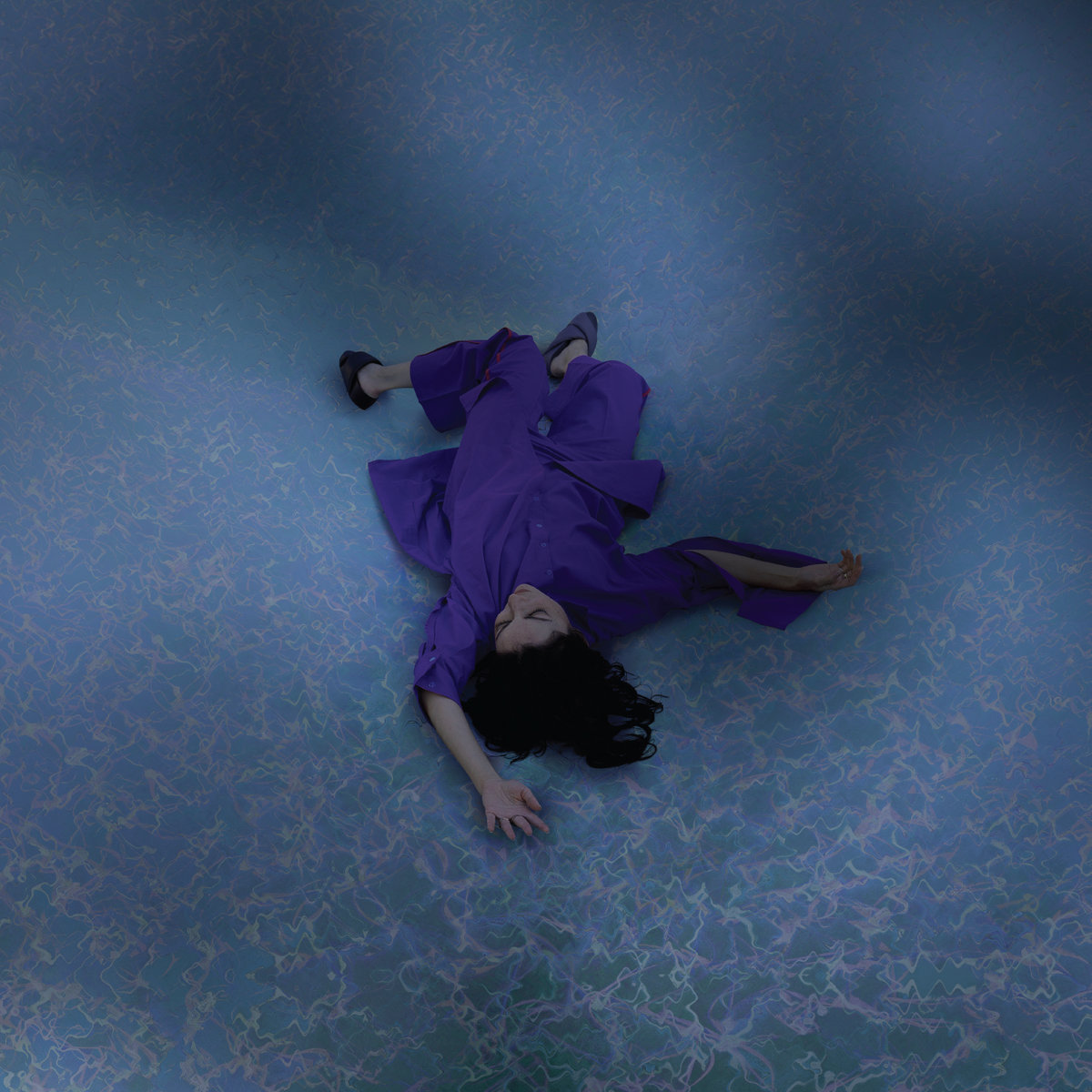 I was caught completely off guard by this latest opus from Dalt, as much of it sounds more like a three-way collaboration between Astrud Gilberto, Perez Prado, and Walter Wanderley than anything resembling the warped and stark electronic pop mutations that the Colombian composer has become synonymous with. After my initial disbelief subsided, however, I quickly decided that ¡Ay! may very well be the strongest album of Dalt's career to date. I suspect Dalt herself would probably agree, as it would be fair to say that her vision remains as compelling and innovative as ever, but she has merely kicked her self-imposed artistic restraints to the curb and embraced the warmer, more sensuous, and melodic sounds that she grew up around. Or, as the album description colorfully puts it, "through the spiraling tendencies of time and topography, Lucrecia has arrived where she began." In any case, the end result is a wonderfully sultry and evocative collection of seductive vocals and tropical rhythms beautifully enhanced with a host of psychotropic and industrial-damaged touches. And she somehow makes it sound like the most natural thing in the world. I definitely did not expect Dalt to secretly be a tropical pop genius at all, which makes her previous albums all the more fascinating now that I know that they were made while pointedly suppressing some of her greatest strengths.
I was caught completely off guard by this latest opus from Dalt, as much of it sounds more like a three-way collaboration between Astrud Gilberto, Perez Prado, and Walter Wanderley than anything resembling the warped and stark electronic pop mutations that the Colombian composer has become synonymous with. After my initial disbelief subsided, however, I quickly decided that ¡Ay! may very well be the strongest album of Dalt's career to date. I suspect Dalt herself would probably agree, as it would be fair to say that her vision remains as compelling and innovative as ever, but she has merely kicked her self-imposed artistic restraints to the curb and embraced the warmer, more sensuous, and melodic sounds that she grew up around. Or, as the album description colorfully puts it, "through the spiraling tendencies of time and topography, Lucrecia has arrived where she began." In any case, the end result is a wonderfully sultry and evocative collection of seductive vocals and tropical rhythms beautifully enhanced with a host of psychotropic and industrial-damaged touches. And she somehow makes it sound like the most natural thing in the world. I definitely did not expect Dalt to secretly be a tropical pop genius at all, which makes her previous albums all the more fascinating now that I know that they were made while pointedly suppressing some of her greatest strengths. This may be Swiss pianist/composer Raphael Loher's first solo album, but he has crossed my path before with his Baumschule trio (featuring Julian Sartorius and Manuel Troller). I am much less familiar with Loher's other trio (KALI), but the importance is that he has spent time improvising with inspiring musicians and has accumulated some very intriguing compositional ideas along the way. Interestingly, Keemuun is itself a bit of an improvisatory collaboration with inspiring (if unwitting) musicians, as Loher often played along with albums by other artists while experimenting with his rapid-fire piano patterns (Beatrice Dillon's rhythmically adventurous Workaround was a particularly central touchstone). In fact, just about everything about this album's evolution feels like fertile grist for a "galaxy brain" meme: a prepared piano album…limited to only ten notes spanning two octaves…improvised against cutting edge techno rhythms…but with all of those foundational rhythms totally excised from the final recording. Needless to say, all of those factors make for a very cool album concept in theory, but I am pleased to report that Loher's brilliant execution has made this a killer album in reality as well.
This may be Swiss pianist/composer Raphael Loher's first solo album, but he has crossed my path before with his Baumschule trio (featuring Julian Sartorius and Manuel Troller). I am much less familiar with Loher's other trio (KALI), but the importance is that he has spent time improvising with inspiring musicians and has accumulated some very intriguing compositional ideas along the way. Interestingly, Keemuun is itself a bit of an improvisatory collaboration with inspiring (if unwitting) musicians, as Loher often played along with albums by other artists while experimenting with his rapid-fire piano patterns (Beatrice Dillon's rhythmically adventurous Workaround was a particularly central touchstone). In fact, just about everything about this album's evolution feels like fertile grist for a "galaxy brain" meme: a prepared piano album…limited to only ten notes spanning two octaves…improvised against cutting edge techno rhythms…but with all of those foundational rhythms totally excised from the final recording. Needless to say, all of those factors make for a very cool album concept in theory, but I am pleased to report that Loher's brilliant execution has made this a killer album in reality as well.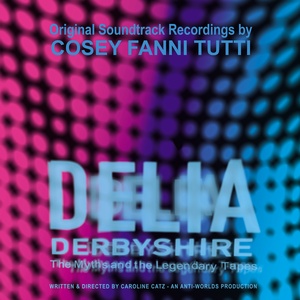 We seem to be in the midst of a long-overdue Delia Derbyshire renaissance at the moment due to the efforts of filmmaker Caroline Catz, Cosey Fanni Tutti, BBC Radiophonic Workshop's Mark Ayres, and others. Fittingly, this unusual and inspired album was commissioned back in 2018 as a score for Catz's similarly unconventional feature-length documentary. Sadly, it seems damn near impossible to see Catz's film at the moment (outside the UK, at least), but this soundtrack was released earlier this year to coincide with Cosey's own foray into telling Derbyshire's story (Re-Sisters: The Lives and Recordings of Delia Derbyshire, Margery Kempe and Cosey Fanni Tutti). The book, film, and album were all inspired by research into Derbyshire's archive and the voluminous recordings and writings that became available after the visionary electronic artist's passing in 2001. Apparently, copyright issues are preventing much of Derbyshire's unearthed work from seeing an official release (there are some great unofficial ones like Inventions For Radio/The Dreams out there), but this album is a compelling consolation prize: using Derbyshire's notes on her compositions and techniques, Cosey has achieved a sort of posthumous homage/collaboration in which her own aesthetic is co-mingled with Derbyshire's singular and groundbreaking techniques and sounds.
We seem to be in the midst of a long-overdue Delia Derbyshire renaissance at the moment due to the efforts of filmmaker Caroline Catz, Cosey Fanni Tutti, BBC Radiophonic Workshop's Mark Ayres, and others. Fittingly, this unusual and inspired album was commissioned back in 2018 as a score for Catz's similarly unconventional feature-length documentary. Sadly, it seems damn near impossible to see Catz's film at the moment (outside the UK, at least), but this soundtrack was released earlier this year to coincide with Cosey's own foray into telling Derbyshire's story (Re-Sisters: The Lives and Recordings of Delia Derbyshire, Margery Kempe and Cosey Fanni Tutti). The book, film, and album were all inspired by research into Derbyshire's archive and the voluminous recordings and writings that became available after the visionary electronic artist's passing in 2001. Apparently, copyright issues are preventing much of Derbyshire's unearthed work from seeing an official release (there are some great unofficial ones like Inventions For Radio/The Dreams out there), but this album is a compelling consolation prize: using Derbyshire's notes on her compositions and techniques, Cosey has achieved a sort of posthumous homage/collaboration in which her own aesthetic is co-mingled with Derbyshire's singular and groundbreaking techniques and sounds. When I first heard the thumping house/disco EP Was It Ever Real?, I had a very hard time believing that it could possibly be a teaser for something more substantial, as much of that EP felt like top-tier Soft Pink Truth that leaves very little room for improvement. If those songs did not make the cut for the full-length, I felt the album surely had to be either absolutely brilliant or absolutely wrong-headed with no possible middle ground. As it turns out, I was at least right about the "little room for improvement" bit, as Is It Going To Get Any Deeper Than This? is not noticeably stronger than the preceding EP. Instead, it feels more like a lateral move, taking Drew Daniel's star-studded house party in a more kaleidoscopically arty and eccentric direction. Unsurprisingly, Deeper features roughly the same international cast of talented guests as the EP, but there are some noteworthy new additions as well, such as Nate Wooley, Wye Oak's Jenn Wasner, and Jaime Stewart (Xiu Xiu). The result is a bit less "all killer, no filler" this time around, but the trade-off is that Deeper is an appropriately deeper and more immersive plunge into Daniel's psyche, touching upon everything from Barry White to George Bataille to krautrock while still managing to be functional, forward-thinking, and archly fun dance music.
When I first heard the thumping house/disco EP Was It Ever Real?, I had a very hard time believing that it could possibly be a teaser for something more substantial, as much of that EP felt like top-tier Soft Pink Truth that leaves very little room for improvement. If those songs did not make the cut for the full-length, I felt the album surely had to be either absolutely brilliant or absolutely wrong-headed with no possible middle ground. As it turns out, I was at least right about the "little room for improvement" bit, as Is It Going To Get Any Deeper Than This? is not noticeably stronger than the preceding EP. Instead, it feels more like a lateral move, taking Drew Daniel's star-studded house party in a more kaleidoscopically arty and eccentric direction. Unsurprisingly, Deeper features roughly the same international cast of talented guests as the EP, but there are some noteworthy new additions as well, such as Nate Wooley, Wye Oak's Jenn Wasner, and Jaime Stewart (Xiu Xiu). The result is a bit less "all killer, no filler" this time around, but the trade-off is that Deeper is an appropriately deeper and more immersive plunge into Daniel's psyche, touching upon everything from Barry White to George Bataille to krautrock while still managing to be functional, forward-thinking, and archly fun dance music. This is my first encounter with this UK-based improv unit, but Fallout 4 is the latest installment of a series of live documents that began all the way back in 2001. The band/collective itself has existed since 1996, though it seems like there's been at least one decade-long hiatus and the ensemble's members have all been active in other projects ranging from prog to ambient to art pop (while Andrew Ostler has been busy building modular synth hardware, among other things). Notably, Darkroom has recently reactivated and released some new material, but the performance documented here dates back to 2012 and the aesthetic lies somewhere between slow-burning Tarentel-style post-rock and Tangerine Dream-inspired space ambient (though Can was apparently a significant inspiration as well). On a related note, the album was mastered by Jono Podmore, who played a significant role in yet another fine vault project (Can's The Lost Tapes). I suspect Podmore had a challenging task on his hands, as the band tellingly state that he was chosen both for "his ability to control sonic forces" and "to make sure it was finally done." While this album and the Fallout series in general capture the band in a more noirish and shadowy mood than usual, I can see why they were so keen to get these recordings out into the world even a decade late, as much of this album is spacey, slow-motion psych magic.
This is my first encounter with this UK-based improv unit, but Fallout 4 is the latest installment of a series of live documents that began all the way back in 2001. The band/collective itself has existed since 1996, though it seems like there's been at least one decade-long hiatus and the ensemble's members have all been active in other projects ranging from prog to ambient to art pop (while Andrew Ostler has been busy building modular synth hardware, among other things). Notably, Darkroom has recently reactivated and released some new material, but the performance documented here dates back to 2012 and the aesthetic lies somewhere between slow-burning Tarentel-style post-rock and Tangerine Dream-inspired space ambient (though Can was apparently a significant inspiration as well). On a related note, the album was mastered by Jono Podmore, who played a significant role in yet another fine vault project (Can's The Lost Tapes). I suspect Podmore had a challenging task on his hands, as the band tellingly state that he was chosen both for "his ability to control sonic forces" and "to make sure it was finally done." While this album and the Fallout series in general capture the band in a more noirish and shadowy mood than usual, I can see why they were so keen to get these recordings out into the world even a decade late, as much of this album is spacey, slow-motion psych magic. This Chicago-based singer-songwriter is a bit of an enigma to me, as details about his discography are quite slim. As far as I can tell, however, 3am is his second solo album, which is noteworthy given that it has been 8 long years since Swan’s similarly excellent debut (I'll Be Around) surfaced. What he was up to during that hiatus is mostly unknown to me (aside from "drawing the night in around his private, unnerving vigil," of course), but one thing I do know is that he formed a duo with James Schimpl called Dead Bandit that released their debut on Quindi last year (the same label behind this album). In any case, 3am is one hell of an aptly titled album, as it very much has the feel of a hushed, late-night confessional via four-track. The overall aesthetic calls to mind the "desolate outsider folk" blurring of an insomniac Elliott Smith or Zelienople with the homespun intimacy of early Iron and Wine, yet the pervasive mood of late night sadness is beautifully balanced with cool production tricks and shades of more lively and eclectic influences like Suicide and Charlie Megira.
This Chicago-based singer-songwriter is a bit of an enigma to me, as details about his discography are quite slim. As far as I can tell, however, 3am is his second solo album, which is noteworthy given that it has been 8 long years since Swan’s similarly excellent debut (I'll Be Around) surfaced. What he was up to during that hiatus is mostly unknown to me (aside from "drawing the night in around his private, unnerving vigil," of course), but one thing I do know is that he formed a duo with James Schimpl called Dead Bandit that released their debut on Quindi last year (the same label behind this album). In any case, 3am is one hell of an aptly titled album, as it very much has the feel of a hushed, late-night confessional via four-track. The overall aesthetic calls to mind the "desolate outsider folk" blurring of an insomniac Elliott Smith or Zelienople with the homespun intimacy of early Iron and Wine, yet the pervasive mood of late night sadness is beautifully balanced with cool production tricks and shades of more lively and eclectic influences like Suicide and Charlie Megira. Keeping up with Andrew Chalk’s discography has always been an amusingly challenging endeavor, but the challenge has shifted from pouncing on limited edition physical releases to vigilantly ensuring that he does not quietly surface with a substantial new opus of some kind without my notice. The most recent substantial new opus is this one on Colin Potter’s ICR label, which is billed as Chalk’s “first new solo album in five years.” It certainly feels like a major statement to me, though the meaning of terms like “new” and “album” can be quite blurry and elusive given Chalk’s singularly minimalist approach to providing album details. In any case, The End Times was (perhaps prophetically) recorded earlier this year and marks a rare CD release after Chalk’s recent run of cassettes. Beyond that, further details are quite slim. That is just fine by me, as the only thing that actually matters is that Andrew Chalk is still making incredibly beautiful and distinctive music, as The End Times is a characteristically sublime and immersive dreamscape of tender melodies, elegantly shifting moods, and vividly detailed textures.
Keeping up with Andrew Chalk’s discography has always been an amusingly challenging endeavor, but the challenge has shifted from pouncing on limited edition physical releases to vigilantly ensuring that he does not quietly surface with a substantial new opus of some kind without my notice. The most recent substantial new opus is this one on Colin Potter’s ICR label, which is billed as Chalk’s “first new solo album in five years.” It certainly feels like a major statement to me, though the meaning of terms like “new” and “album” can be quite blurry and elusive given Chalk’s singularly minimalist approach to providing album details. In any case, The End Times was (perhaps prophetically) recorded earlier this year and marks a rare CD release after Chalk’s recent run of cassettes. Beyond that, further details are quite slim. That is just fine by me, as the only thing that actually matters is that Andrew Chalk is still making incredibly beautiful and distinctive music, as The End Times is a characteristically sublime and immersive dreamscape of tender melodies, elegantly shifting moods, and vividly detailed textures. Few artists have consistently fascinated and perplexed me quite like Oren Ambarchi, as I absolutely loved his early solo guitar albums like Grapes From the Estate, then witnessed him spend the next 15 or 20 years exploring improvisatory and rhythmic-driven detours to continually intensifying and breathless acclaim. I imagine it feels somewhat akin to being a Velvet Underground fan encountering unanimous rapturous praise for their post-Cale albums–I get the appeal, but that would not be my personal go-to era if I wanted to illustrate that band's greatness. Then again, maybe my perspective on Ambarchi's evolution would shift dramatically if I just liked jazz fusion more. In any case, I can certainly understand the unusual trajectory from Oren's viewpoint, as few would pass up a chance to form a trio with Jim O'Rourke and Keiji Haino and jamming with talented friends over mutant krautrock/fusion grooves seems like a hell of a lot more fun than making slow-motion guitar magic by yourself (can't fault a guy for loving spontaneity and challenging new collaborations). Both spontaneity and inspiring guest performances abound on Shebang, as Ambarchi enlisted quite a killer (virtual) ensemble, resulting in one of my favorite of his albums in recent memory (2016's Hubris being the other serious contender).
Few artists have consistently fascinated and perplexed me quite like Oren Ambarchi, as I absolutely loved his early solo guitar albums like Grapes From the Estate, then witnessed him spend the next 15 or 20 years exploring improvisatory and rhythmic-driven detours to continually intensifying and breathless acclaim. I imagine it feels somewhat akin to being a Velvet Underground fan encountering unanimous rapturous praise for their post-Cale albums–I get the appeal, but that would not be my personal go-to era if I wanted to illustrate that band's greatness. Then again, maybe my perspective on Ambarchi's evolution would shift dramatically if I just liked jazz fusion more. In any case, I can certainly understand the unusual trajectory from Oren's viewpoint, as few would pass up a chance to form a trio with Jim O'Rourke and Keiji Haino and jamming with talented friends over mutant krautrock/fusion grooves seems like a hell of a lot more fun than making slow-motion guitar magic by yourself (can't fault a guy for loving spontaneity and challenging new collaborations). Both spontaneity and inspiring guest performances abound on Shebang, as Ambarchi enlisted quite a killer (virtual) ensemble, resulting in one of my favorite of his albums in recent memory (2016's Hubris being the other serious contender). Midnight Rocker borrows its title from the opening line of Massive Attack's "Safe From Harm," which was the lead song on their 1991 debut Blue Lines. Notably, that album was the beginning of Andy's recurring involvement with that project, but "Safe From Harm" is a curious song to revisit, as Andy did not sing on the original and it has a darker, more dramatic tone than the rest of Midnight Rocker. Given how wildly successful that album was, I imagine its inclusion here was a savvy choice, but its killer bass and tambourine groove plays far more to Sherwood's strengths than the lyrics and tone do to Andy's. The album's other trips down memory lane are a handful of contemporized resurrections from Andy's own sprawling discography such as "This Must Be Hell, "Materialist," and "Mr. Bassie." Of that lot, "Mr. Bassie" fares the best, as it boasts a strong melodic hook and wades into increasingly dubby territory as it unfolds.
Midnight Rocker borrows its title from the opening line of Massive Attack's "Safe From Harm," which was the lead song on their 1991 debut Blue Lines. Notably, that album was the beginning of Andy's recurring involvement with that project, but "Safe From Harm" is a curious song to revisit, as Andy did not sing on the original and it has a darker, more dramatic tone than the rest of Midnight Rocker. Given how wildly successful that album was, I imagine its inclusion here was a savvy choice, but its killer bass and tambourine groove plays far more to Sherwood's strengths than the lyrics and tone do to Andy's. The album's other trips down memory lane are a handful of contemporized resurrections from Andy's own sprawling discography such as "This Must Be Hell, "Materialist," and "Mr. Bassie." Of that lot, "Mr. Bassie" fares the best, as it boasts a strong melodic hook and wades into increasingly dubby territory as it unfolds. Back in 2009, Important Records released a landmark compilation entitled The Harmonic Series (A Compilation Of Musical Works In Just Intonation). Significantly, that album featured a Greg Davis piece entitled "Star Primes (For James Tenney)," which was Davis's earliest foray into composing using just intonation. Nearly a decade later, greyfade founder Joseph Branciforte found himself mesmerized by that piece on a long drive back home from Vermont and was inspired to contact Davis to discuss the unusual process behind the piece. As it turns out, Davis's interest in mathematical just intonation experiments ran quite deeply, as it formed the entire basis for his 2009 album Primes. Naturally, the enthusiastic Branciforte encouraged Davis to revisit his work in that vein, which led to an 8-channel performance at NYC's Fridman Gallery in 2019. The aptly titled New Primes is a reworking of that new material repurposed for a stereo home-listening experience. Needless to say, math-driven sine wave drones are not for everyone, but the cold and futuristic alien beauty of these pieces will likely resonate deeply with fans of otherworldly "ghost in the machine" opuses like Nurse With Wound's Soliloquy For Lilith.
Back in 2009, Important Records released a landmark compilation entitled The Harmonic Series (A Compilation Of Musical Works In Just Intonation). Significantly, that album featured a Greg Davis piece entitled "Star Primes (For James Tenney)," which was Davis's earliest foray into composing using just intonation. Nearly a decade later, greyfade founder Joseph Branciforte found himself mesmerized by that piece on a long drive back home from Vermont and was inspired to contact Davis to discuss the unusual process behind the piece. As it turns out, Davis's interest in mathematical just intonation experiments ran quite deeply, as it formed the entire basis for his 2009 album Primes. Naturally, the enthusiastic Branciforte encouraged Davis to revisit his work in that vein, which led to an 8-channel performance at NYC's Fridman Gallery in 2019. The aptly titled New Primes is a reworking of that new material repurposed for a stereo home-listening experience. Needless to say, math-driven sine wave drones are not for everyone, but the cold and futuristic alien beauty of these pieces will likely resonate deeply with fans of otherworldly "ghost in the machine" opuses like Nurse With Wound's Soliloquy For Lilith.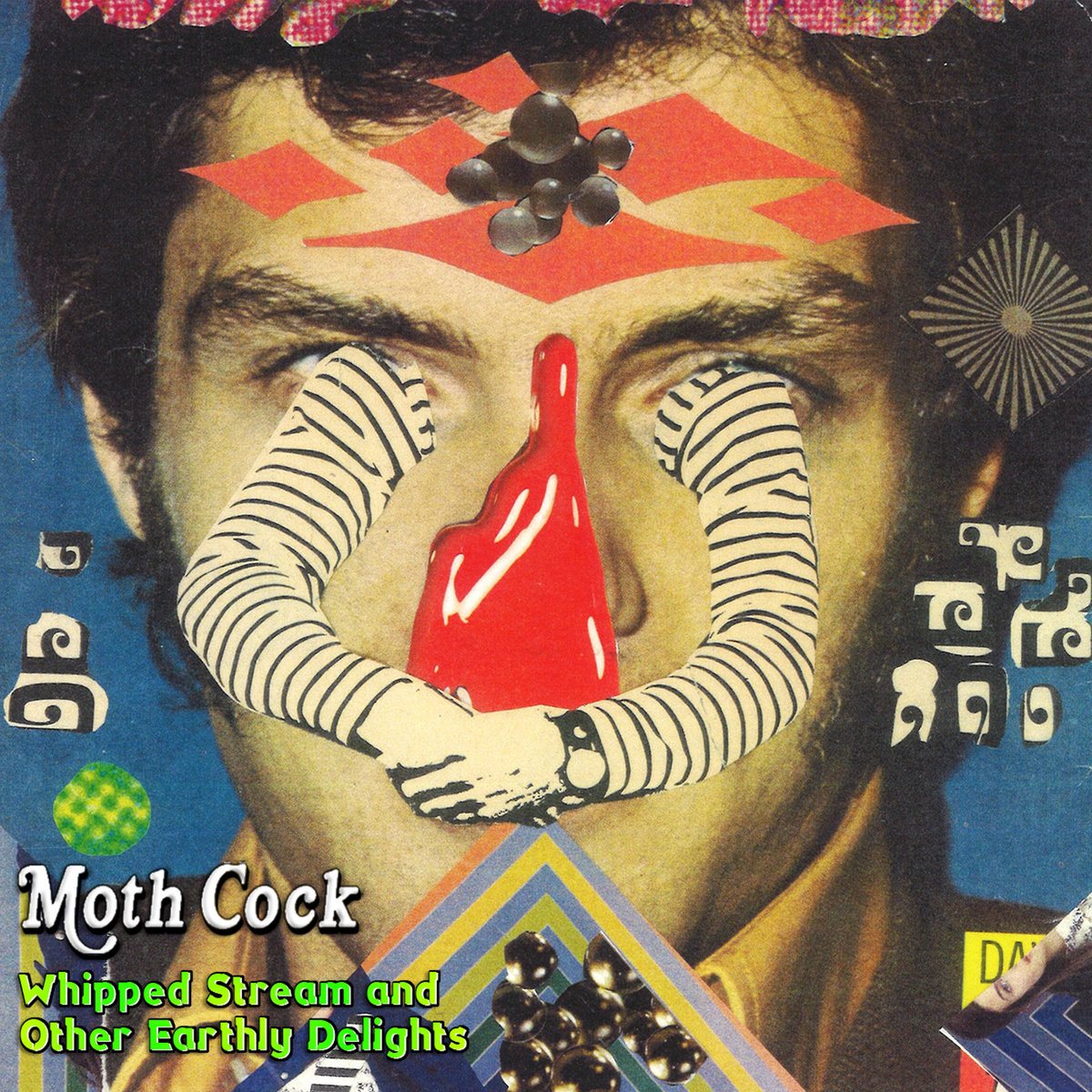 I doubt anyone can truly say that they know what to expect from a new Hausu Mountain release, but I still felt a bit gobsmacked by the latest from this ambitiously unhinged Ohio duo. While it may read like hyperbole to the uninitiated, the label's claim that Whipped Stream is a "durational smorgasbord of new music capable of knocking even the most seasoned zoner onto their ass" feels like an apt description of this triple cassette behemoth of fried and kaleidoscopic derangement (it clock in at roughly 3½ hours, after all). As I have not yet been lucky enough to experience Moth Cock's cacophonous sensory onslaught live, I was also a bit stunned to learn that most or all these pieces were culled from real-time performances. I honestly do not comprehend how two guys armed with a sax, loop pedals, and a "decades-old Electribe sampler / drum machine" can whip up such a vividly textured and wildly imaginative hurricane of sound so quickly and organically, as there seems to be some real hive mind shit afoot with these dudes. Unsurprisingly, I am at a loss to find a succinct description to explain what transpires over the course of this singular opus, but most of Whipped Stream can be reasonably described as a gnarled psychedelic freakout mashed together with Borbetomagus-style free jazz, the '80s noise tape underground, and jabbering sound collage lunacy. In the wrong hands, such an outré stew coupled with such an indulgent duration would be an effective recipe for total unlistenability, but I'll be damned if Moth Cock have not emerged from this quixotic endeavor looking like fitfully brilliant visionaries. I should add the caveat that Moth Cock also seem willfully annoying at times, but it is rare that such bumps in the road are not ultimately transformed into a near-perfect mindfuck or something unexpectedly sublime.
I doubt anyone can truly say that they know what to expect from a new Hausu Mountain release, but I still felt a bit gobsmacked by the latest from this ambitiously unhinged Ohio duo. While it may read like hyperbole to the uninitiated, the label's claim that Whipped Stream is a "durational smorgasbord of new music capable of knocking even the most seasoned zoner onto their ass" feels like an apt description of this triple cassette behemoth of fried and kaleidoscopic derangement (it clock in at roughly 3½ hours, after all). As I have not yet been lucky enough to experience Moth Cock's cacophonous sensory onslaught live, I was also a bit stunned to learn that most or all these pieces were culled from real-time performances. I honestly do not comprehend how two guys armed with a sax, loop pedals, and a "decades-old Electribe sampler / drum machine" can whip up such a vividly textured and wildly imaginative hurricane of sound so quickly and organically, as there seems to be some real hive mind shit afoot with these dudes. Unsurprisingly, I am at a loss to find a succinct description to explain what transpires over the course of this singular opus, but most of Whipped Stream can be reasonably described as a gnarled psychedelic freakout mashed together with Borbetomagus-style free jazz, the '80s noise tape underground, and jabbering sound collage lunacy. In the wrong hands, such an outré stew coupled with such an indulgent duration would be an effective recipe for total unlistenability, but I'll be damned if Moth Cock have not emerged from this quixotic endeavor looking like fitfully brilliant visionaries. I should add the caveat that Moth Cock also seem willfully annoying at times, but it is rare that such bumps in the road are not ultimately transformed into a near-perfect mindfuck or something unexpectedly sublime. This is apparently B. Fleischmann's eleventh solo album, which surprised me a bit, as I generally enjoy his work yet have only heard a small fraction of it. That said, the eclectic and shapeshifting Austrian composer's release schedule has slowed considerably since the heyday of IDM/indietronica/glitch pop in the late '90s/early 2000s that put him on the map. In fact, it has been four years since Fleischmann last surfaced with the amusingly titled but hopefully not prophetic Stop Making Fans and Music for Shared Rooms is actually more of a retrospective than a formal new statement. That said, most fans (myself included) are unlikely to have previously encountered any of the sixteen pieces collected here, as the album is a look back at some highlights from Fleischmann's extensive archive of pieces composed for film and theater. That archive apparently includes roughly 600 pieces composed over a stretch of twelve years, so Fleischmann presumably did not have much trouble coming up with a double LP worth of delights. To his credit, however, he decided to rework and recontextualize the selected pieces into a satisfying and thoughtfully constructed whole (and one that also doubles as a "kaleidoscopic glimpse of a forward-thinking musician at home in many different musical worlds"). Admittedly, some of those musical worlds appeal more to me than others, but Fleischmann almost always brings a strong pop sensibility and bittersweet warmth to the table, so the results are invariably wonderful when he hits the mark (which he does with impressive frequency here).
This is apparently B. Fleischmann's eleventh solo album, which surprised me a bit, as I generally enjoy his work yet have only heard a small fraction of it. That said, the eclectic and shapeshifting Austrian composer's release schedule has slowed considerably since the heyday of IDM/indietronica/glitch pop in the late '90s/early 2000s that put him on the map. In fact, it has been four years since Fleischmann last surfaced with the amusingly titled but hopefully not prophetic Stop Making Fans and Music for Shared Rooms is actually more of a retrospective than a formal new statement. That said, most fans (myself included) are unlikely to have previously encountered any of the sixteen pieces collected here, as the album is a look back at some highlights from Fleischmann's extensive archive of pieces composed for film and theater. That archive apparently includes roughly 600 pieces composed over a stretch of twelve years, so Fleischmann presumably did not have much trouble coming up with a double LP worth of delights. To his credit, however, he decided to rework and recontextualize the selected pieces into a satisfying and thoughtfully constructed whole (and one that also doubles as a "kaleidoscopic glimpse of a forward-thinking musician at home in many different musical worlds"). Admittedly, some of those musical worlds appeal more to me than others, but Fleischmann almost always brings a strong pop sensibility and bittersweet warmth to the table, so the results are invariably wonderful when he hits the mark (which he does with impressive frequency here). This first solo album from queer, androgynous soul singer Kyle Kidd is an incredibly strong contender for best debut of the year, but he/she/they (Kidd embraces all pronounds) has been been steadily releasing great music for a while as part of Cleveland's Mourning [A] BLKstar ensemble. Notably, however, Kidd's past also includes a background in church choirs as well as a stint as an American Idol competitor. Normally learning about the latter would send me running in the opposite direction, but Kidd joins the exclusive pantheon of vocal virtuosos like Ian William Craig and Zola Jesus lured away from a conventional trajectory by a healthy passion for more underground sounds. That said, a decent amount of Soothsayer legitimately feels like it could have burned up the Soul/R&B charts if it had been released in the late '70s and had a major label production team at the console. As time travel was not a viable option, Soothsayer instead found a home on the oft-stellar Chicago indie American Dreams and Kidd's sensuous, hook-filled songs eschew the polished sheen of pop production for a hypnagogic veil of tape hiss and reverb (much to my delight, predictably).
This first solo album from queer, androgynous soul singer Kyle Kidd is an incredibly strong contender for best debut of the year, but he/she/they (Kidd embraces all pronounds) has been been steadily releasing great music for a while as part of Cleveland's Mourning [A] BLKstar ensemble. Notably, however, Kidd's past also includes a background in church choirs as well as a stint as an American Idol competitor. Normally learning about the latter would send me running in the opposite direction, but Kidd joins the exclusive pantheon of vocal virtuosos like Ian William Craig and Zola Jesus lured away from a conventional trajectory by a healthy passion for more underground sounds. That said, a decent amount of Soothsayer legitimately feels like it could have burned up the Soul/R&B charts if it had been released in the late '70s and had a major label production team at the console. As time travel was not a viable option, Soothsayer instead found a home on the oft-stellar Chicago indie American Dreams and Kidd's sensuous, hook-filled songs eschew the polished sheen of pop production for a hypnagogic veil of tape hiss and reverb (much to my delight, predictably). Over the last few years, it has become quite clear to me that any major new solo guitar album from Bill Orcutt is destined to be an inventive, visceral, and damn near essential release. Unsurprisingly, Music for Four Guitars does absolutely nothing to disrupt that impressive run, yet I sometimes forget that Orcutt has a restless creative streak that endlessly propels him both outward and forward like some kind of avant garde shark. As a result, his discography is full of wild surprises, unexpected detours, and challenging experiments such as last year's wonderfully obsessive and completely bananas A Mechanical Joey, so anyone who thinks they know exactly what to expect from a new Bill Orcutt album is either delusional or not paying close enough attention. Case in point: Music for Four Guitars feels like an evolution upon Orcutt's Made Out of Sound approach of using a second track to improvise against himself, but he now expands it to four tracks and shifts to a more composed, focused, and melodic approach very different from his volcanic duo with Chris Corsano. Notably, this project was originally intended for a Rhys Chatham-esque quartet of guitarists and has been gestating since at least 2015, but COVID-era circumstances ultimately led Orcutt to simply do everything himself. As Tom Carter insightfully observes in the album notes, this album is a fascinating hybrid of the feral spontaneity of Orcutt's guitar albums and the "relentless, gridlike composition" of his electronic music that often calls to mind an imaginary Steve Reich-inspired post-punk/post-hardcore project from Touch and Go or Amphetamine Reptile's heyday.
Over the last few years, it has become quite clear to me that any major new solo guitar album from Bill Orcutt is destined to be an inventive, visceral, and damn near essential release. Unsurprisingly, Music for Four Guitars does absolutely nothing to disrupt that impressive run, yet I sometimes forget that Orcutt has a restless creative streak that endlessly propels him both outward and forward like some kind of avant garde shark. As a result, his discography is full of wild surprises, unexpected detours, and challenging experiments such as last year's wonderfully obsessive and completely bananas A Mechanical Joey, so anyone who thinks they know exactly what to expect from a new Bill Orcutt album is either delusional or not paying close enough attention. Case in point: Music for Four Guitars feels like an evolution upon Orcutt's Made Out of Sound approach of using a second track to improvise against himself, but he now expands it to four tracks and shifts to a more composed, focused, and melodic approach very different from his volcanic duo with Chris Corsano. Notably, this project was originally intended for a Rhys Chatham-esque quartet of guitarists and has been gestating since at least 2015, but COVID-era circumstances ultimately led Orcutt to simply do everything himself. As Tom Carter insightfully observes in the album notes, this album is a fascinating hybrid of the feral spontaneity of Orcutt's guitar albums and the "relentless, gridlike composition" of his electronic music that often calls to mind an imaginary Steve Reich-inspired post-punk/post-hardcore project from Touch and Go or Amphetamine Reptile's heyday.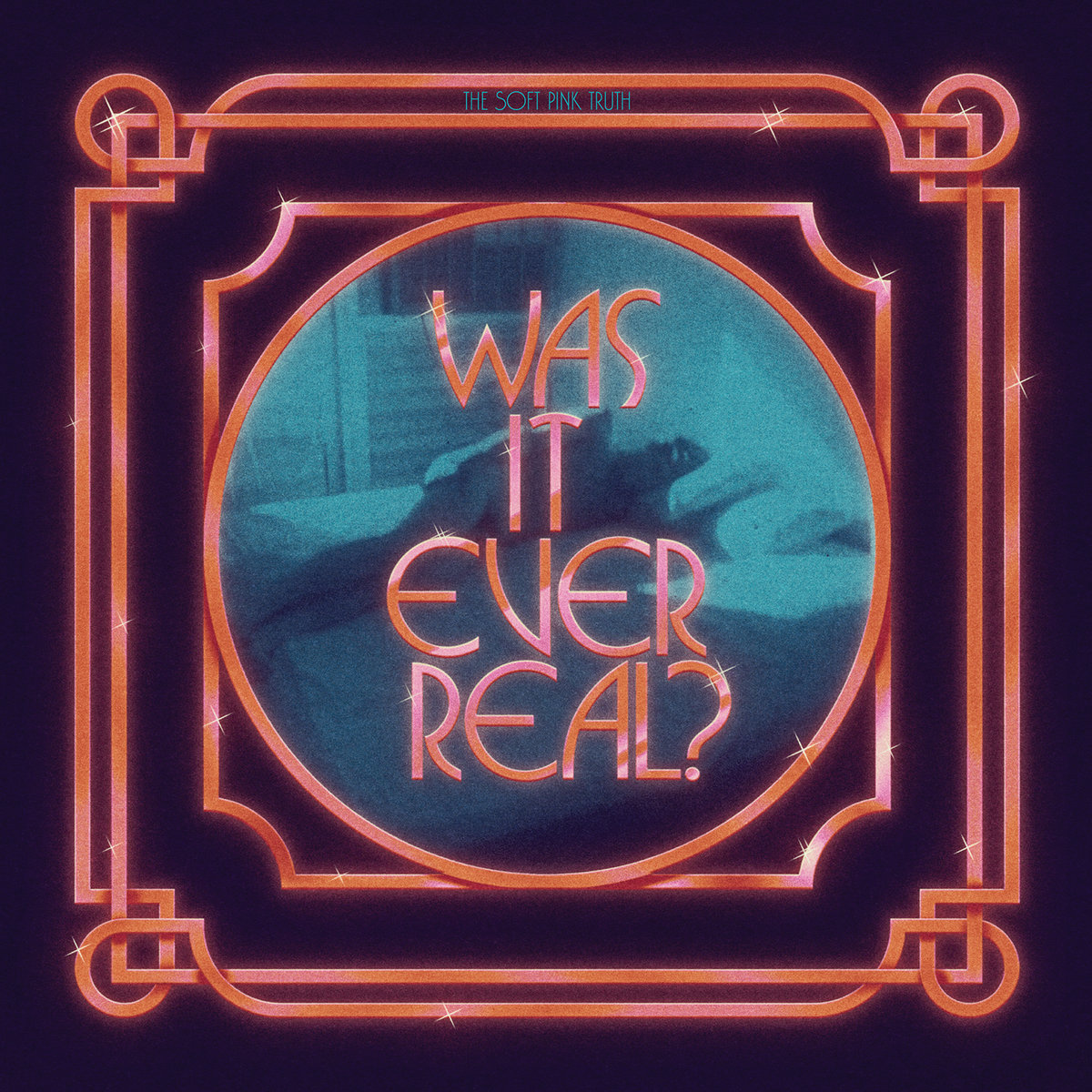 I had successfully deluded myself into thinking that I had spent my pandemic downtime wisely and constructively for the most part, but learning that Drew Daniel spent that same period assembling an all-star disco ensemble is now making me lament the sad limitations of my imagination and ambition. The resultant album—Is It Going to Get Any Deeper Than This?—is slated for release this October, but this teaser mini-album (part of Thrill Jockey's 30th anniversary campaign of limited/special releases) is one hell of a release in its own right and a true jewel in Daniel's discography. Naturally, the big immediate draws are the killer single "Is It Gonna to Get Any Deeper Than This (Dark Room Mix)" and a disco/deep house reimagining of Coil's classic "The Anal Staircase," but the other two songs are every bit as good (if not better) than that pair, so no self-respecting fan of Daniel's oeuvre will want to sleep on this ostensibly minor release (very few artists choose to release their best work on cassingle in 2022). Naturally, there is plenty of psychotropic weirdness mingled with all the great grooves, but I was still legitimately taken aback by how beautifully Daniels and his collaborators shot past kitsch/homage/pastiche and landed at completely functional, fun, and legit dance music. No one would raise a quizzical eyebrow if someone secretly slipped this album into the playlist at a party (not until "Anal Staircase" dropped, at least).
I had successfully deluded myself into thinking that I had spent my pandemic downtime wisely and constructively for the most part, but learning that Drew Daniel spent that same period assembling an all-star disco ensemble is now making me lament the sad limitations of my imagination and ambition. The resultant album—Is It Going to Get Any Deeper Than This?—is slated for release this October, but this teaser mini-album (part of Thrill Jockey's 30th anniversary campaign of limited/special releases) is one hell of a release in its own right and a true jewel in Daniel's discography. Naturally, the big immediate draws are the killer single "Is It Gonna to Get Any Deeper Than This (Dark Room Mix)" and a disco/deep house reimagining of Coil's classic "The Anal Staircase," but the other two songs are every bit as good (if not better) than that pair, so no self-respecting fan of Daniel's oeuvre will want to sleep on this ostensibly minor release (very few artists choose to release their best work on cassingle in 2022). Naturally, there is plenty of psychotropic weirdness mingled with all the great grooves, but I was still legitimately taken aback by how beautifully Daniels and his collaborators shot past kitsch/homage/pastiche and landed at completely functional, fun, and legit dance music. No one would raise a quizzical eyebrow if someone secretly slipped this album into the playlist at a party (not until "Anal Staircase" dropped, at least). There are several William Basinski albums that I absolutely love, but his various collaborations are rarely as compelling as his solo work (the leftfield Sparkle Division being a notable exception, of course). The fundamental issue is that Basinski's finest moments tend to be an intimate distillation of a single theme to its absolute essence, which does not leave much room at all for anyone else to add something without dispelling the fragile magic. While it is unclear if Janek Schaefer is unusually attuned to Basinski's wavelength or if the duo simply waited until the path to something lasting and beautiful organically revealed itself, I can confidently state that the pair ultimately wound up in exactly the right place regardless of how they got there. If I did not understand and appreciate the sizeable challenges inherent in crafting a hypnotically satisfying and immersive album from a mere handful of notes, I would be amused that Basinski and Schaefer first began working on this album together all the way back in 2014 and that the entire 8-year process basically resulted in just two or three simple piano melodies. In fact, I am still a little amused by this album's nearly decade-long gestation, but that does not make the result any less impressive. Significantly, " . . . on reflection " is dedicated to Harold Budd, but an even closer stylistic kindred spirit is Erik Satie (albeit a blearily impressionistic channeling of the visionary composer's work rather than any kind of straight homage).
There are several William Basinski albums that I absolutely love, but his various collaborations are rarely as compelling as his solo work (the leftfield Sparkle Division being a notable exception, of course). The fundamental issue is that Basinski's finest moments tend to be an intimate distillation of a single theme to its absolute essence, which does not leave much room at all for anyone else to add something without dispelling the fragile magic. While it is unclear if Janek Schaefer is unusually attuned to Basinski's wavelength or if the duo simply waited until the path to something lasting and beautiful organically revealed itself, I can confidently state that the pair ultimately wound up in exactly the right place regardless of how they got there. If I did not understand and appreciate the sizeable challenges inherent in crafting a hypnotically satisfying and immersive album from a mere handful of notes, I would be amused that Basinski and Schaefer first began working on this album together all the way back in 2014 and that the entire 8-year process basically resulted in just two or three simple piano melodies. In fact, I am still a little amused by this album's nearly decade-long gestation, but that does not make the result any less impressive. Significantly, " . . . on reflection " is dedicated to Harold Budd, but an even closer stylistic kindred spirit is Erik Satie (albeit a blearily impressionistic channeling of the visionary composer's work rather than any kind of straight homage).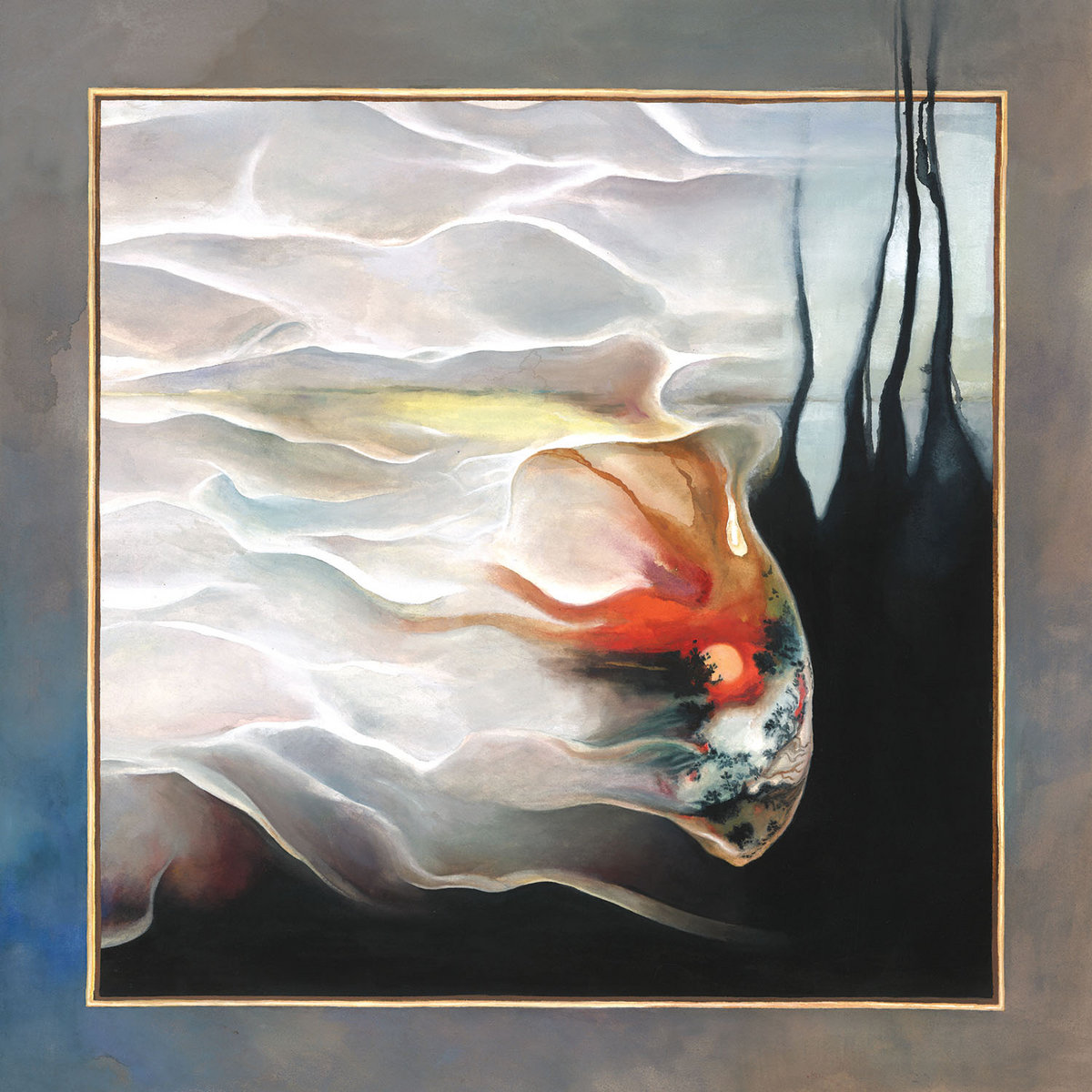 Ten years after her first appearance on Keith Rankin and Seth Graham's perennially bizarre and eclectic Orange Milk label , Paul returns to the fold with her new trio. Naturally, there are plenty of similarities between this latest release and the trio's 2020 debut (Ray), but there has been some significant evolution as well. To my ears, I Am Fog feels considerably more sketchlike and challenging than Ray, but that is not necessarily a bad thing, as anyone seeking out an Ashley Paul album would presumably already have a healthy appreciation for dissonance and deconstruction. A decent analogy might be that Ray is like a short story collection while I Am Fog is more like a series of poems: the voice and vision are instantly recognizable, but these nine pieces are an unusually distilled, minimal, and impressionistic version of that voice. In less abstract terms, that means that I Am Fog again sounds like some kind of unsettling and psychotropic outsider cabaret, but the emphasis is now more upon gnarled/strangled textures and lingering uncomfortable harmonies than it is on melodic hooks and broken, lurching rhythms. In addition to the trio's overall step even further into the outré, the album also features further enticement with one of Paul's strongest "singles" to date ("Shivers").
Ten years after her first appearance on Keith Rankin and Seth Graham's perennially bizarre and eclectic Orange Milk label , Paul returns to the fold with her new trio. Naturally, there are plenty of similarities between this latest release and the trio's 2020 debut (Ray), but there has been some significant evolution as well. To my ears, I Am Fog feels considerably more sketchlike and challenging than Ray, but that is not necessarily a bad thing, as anyone seeking out an Ashley Paul album would presumably already have a healthy appreciation for dissonance and deconstruction. A decent analogy might be that Ray is like a short story collection while I Am Fog is more like a series of poems: the voice and vision are instantly recognizable, but these nine pieces are an unusually distilled, minimal, and impressionistic version of that voice. In less abstract terms, that means that I Am Fog again sounds like some kind of unsettling and psychotropic outsider cabaret, but the emphasis is now more upon gnarled/strangled textures and lingering uncomfortable harmonies than it is on melodic hooks and broken, lurching rhythms. In addition to the trio's overall step even further into the outré, the album also features further enticement with one of Paul's strongest "singles" to date ("Shivers"). Jeff Barsky has been quietly releasing alternately sublime and noise-ravaged guitar albums for years and this latest album finds him returning to LA's oft ahead-of-the-curve Already Dead Tapes (where he last surfaced with 2015's Flickering). Normally, I would not describe an edition of 100 tapes as a major release, but most of Barsky's solo work has historically appeared on his own Insect Fields imprint so Celestial Cycles will likely reach more ears than usual. Fittingly, it is an especially strong album, capturing Barsky at the absolute height of his powers. While few solo guitarists can summon dreamlike beauty from their ax as reliably and masterfully as Barsky, the centerpiece of this album is unquestionably the swirling and nightmarish closing epic "Become The Birds," which arguably recaptures the magic of Campbell Kneale's Birchville Cat Motel project in its prime (which is damn high praise coming from me).
Jeff Barsky has been quietly releasing alternately sublime and noise-ravaged guitar albums for years and this latest album finds him returning to LA's oft ahead-of-the-curve Already Dead Tapes (where he last surfaced with 2015's Flickering). Normally, I would not describe an edition of 100 tapes as a major release, but most of Barsky's solo work has historically appeared on his own Insect Fields imprint so Celestial Cycles will likely reach more ears than usual. Fittingly, it is an especially strong album, capturing Barsky at the absolute height of his powers. While few solo guitarists can summon dreamlike beauty from their ax as reliably and masterfully as Barsky, the centerpiece of this album is unquestionably the swirling and nightmarish closing epic "Become The Birds," which arguably recaptures the magic of Campbell Kneale's Birchville Cat Motel project in its prime (which is damn high praise coming from me). 
